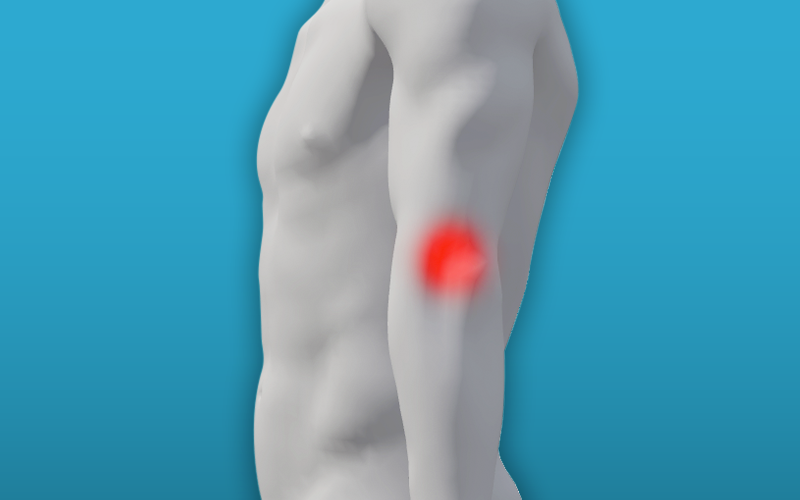
Olecranon bursitis
What is it?
The olecranon bursa is a sac overlying the olecranon process (the bony tip) of the elbow beneath the skin. It reduces friction on movement between the skin, tendons, ligaments, and bone, and allows them to glide smoothly over one another.
Bursitis occurs when the bursa is irritated and inflamed. This can be as a result of overuse or trauma. It can be due to an infection within the bursal sac. If there are any signs of infection (redness, heat, swelling and tenderness worsening or feeling unwell) this needs to be treated immediately.
Olecranon bursitis is more common in
- Young or middle-aged men.
- People in jobs which involve risk of regular elbow trauma or pressure on the bursa. For example gardeners and mechanics.
- Athletes who play sports which involve repetitive overhead throwing or elbow flexion and extension.

Most cases of olecranon bursitis resolve without complications; however, recurrent episodes may occur especially after recurrent minor trauma.
What are the common symptoms of olecranon bursitis?
- Swelling over the elbow that appears over several hours to several days, may be tender or warm (but may be painless).
- Movement at the elbow joint is painless except at full flexion when the swollen bursa is compressed.
- There is a history of preceding trauma or bursal disease.
- There is evidence of local skin abrasion.
How to manage it?
The management of olecranon bursitis includes
- Rest,
- compression bandaging,
- avoidance of trauma to the elbows,
- Simple pain killers
- On rare occasions a bursitis may require an aspiration or a steroid injection.
If there is any heat; significant swelling; redness or restriction within the joint, there may be an infection. You need to urgently seek the advice of your GP.
Simple painkillers
Painkillers like paracetamol will ease the pain, but need to be taken regularly in order to control the pain. Always follow the instructions on the packet.
Anti-inflammatories like ibuprofen can help with swelling, and therefore help you move more freely. Topical (applied directly on the affected body area) anti-inflammatories are recommended initially. Follow the instructions on the packet and discuss using them safely with a pharmacist, especially if you have any underlying health conditions
However, you should not take ibuprofen for 48 hours after an initial injury as it may slow down healing.
Up to date guidelines can be found on the NHS website:
Other medicines can help to reduce inflammation, swelling and pain. You should discuss this with your GP if the simple pain relief advice does not help or if you are needing to take ibuprofen for more than 10 days.
Ice
For ice therapy use a damp cloth containing an icepack (or bag of frozen peas) over the top of the painful area to help numb the pain. Leave it on for up to 20 minutes and use up to three times a day.
- You should be cautious using these treatments if you have altered skin sensation or circulatory problems.
- Check the skin regularly during and after the ice pack application
- Stop if there is excessive pain, numbness or tingling
- Do not put ice directly on to the skin as this may cause a burn.
If you have not responded to any of the above advice after 2 months please discuss with your GP.
